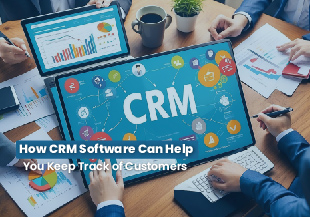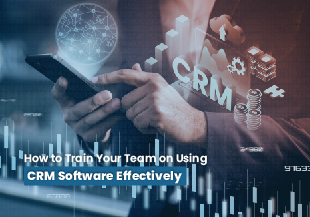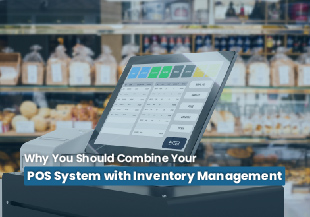Discover best strategies and techniques to train your team on effectively using CRM software for improved productivity and customer relationship management.
Looking to revolutionize your team's with CRM software? CRM (Customer Relationship Management) software is a great way of maximizing communication, workflow simplifications, and increasing productivity within the organization. To leverage all these, though, your team must learn how to work best with the software. Employees will take advantage of all the features that are being offered only if they are effectively trained. In the article, we will discuss effective methods for your team to train on using CRM software to ensure you are confident and capable of utilizing this really valuable tool.
Why Effective CRM Training Matters?
CRM software designed to organize and analyze customer data, enhance communication with clients, and streamline tasks related to sales, support work, or marketing. Properly applied CRM significantly enhance the customer experience, contribute to increased sales, and overall efficiency. For this, however, employees need to understand not only the basics of the software but also its more sophisticated features.
CRM systems track interactions and provide insight into customer behavior.
Proper use of CRM can improve the retention of customers and their loyalty.
Teams can coordinate and prioritize their tasks better while using CRM and can improve the delivery of services.
Extensive training will ensure that employees use all the features available in the software to the fullest extent.
Installation of CRM Application
Simply installing the CRM application without a well-structured training program may lead to common problems, such as incorrect information, irregular usage, and frustration by members of your team. It saves you the risk of such problems that will affect smooth operation and productivity.
Employees with poor training do not readily input information nor find their way.
Adoption will be minimal, and misuse of the features will be done if there is no training.
It's only through an ideal training strategy that you'd find the workforce unified and uniform in delivering quality results.
How to Train Your Team for CRM Success?
Step 1. Provide An All-Rounded Overview
Start it by introducing your team, to begin with, starting with its purpose, key features, and the merits the system holds within the organizational setting.
The Merit of CRM Application
Explain to your team why the CRM software is important for your company and how it can help you in achieving some of the goals that you all set. If employees understand why CRM is important for the company, they can easily take training by heart and even become fully engaged in it. Thus, explain how the CRM helps in managing the data of customers, enhances communication, and works efficiently on tasks.
Walk through the basic CRM features your team will be using most. This includes contact management, lead tracking, sales forecasting, and reporting tools. Highlight how each of these features can help them with their particular jobs in sales, customer service, or marketing.
Specify Expected Results
Set clear expectations about how the CRM should be utilized daily. Employees need to know what they are looking to achieve, such as proper input of information, timely follow-throughs, and collaboration from different departments.
Set up simulations demonstrating normal work activities that your employees will be expected to carry out, such as the creation of new contacts, registering the interactions, and producing reports. Through this, the employees acquire handling of the software through hands-on experience.
Active Participation
Engagement in interactive events with members of the staff tasked to try out specific features of the system and try out the main components in practice. You have the liberty to let the workers raise questions, test different parts, and troubleshoot following strict guidelines. Active engagement makes information more memorable to students and makes the training experience easier.
Step 2. Identifying CRM
Champions Identify a few CRM "champions" in the team whom the others can seek for advice and help through questions and issues so that it is going to be people who are wholly aware of the software as well as might turn out to be a resource for query in day-to-day business activities.
Accessibility to Training Materials
Provide digital materials, such as video tutorials, guides, and FAQs, so that the employees have easy access to them in case they need them. This will give employees support at any point in time and, at the same time, help refresh their memory on a topic while they are at work.
Schedule Refresher Sessions
Conduct training refreshers periodically to reinforce CRM usage and introduce any new features or updates. The forums can also be a feedback channel, where team members share the challenges and insights that would allow for continuous improvement.
Encourage Feedback and Improvements
Request your team to provide their views on how they experienced CRM. Such feedback would help you understand areas that need more training and how the entire system could be made friendlier for the users. Open up channels of communication, which allow them to raise their problems with CRM.
Step 3: Track and Evaluate Training Effectiveness
This is the final step of implementing CRM. Monitor the effectiveness of how your team adapts to the system and make necessary improvements.
Establish Performance Indicators
Identify appropriate KPIs (the Key Performance Indicators) to facilitate the monitoring of teamwide CRM utilization. Examples include accuracy ratings, the number of new leads obtained, or how satisfied your customers are, among others. Keep watch on them from time to time to ensure that your CRM application performs in line with requirements.
Carry Out Skill Reviews
Regularly measure the skills of your team regarding using the CRM system. These could be done in the form of quizzes, feedback surveys, or practical tests that are conducted to check how comfortable a team member is with several features. Such assessment will help you determine where there is still a need for further training.
Celebrate Successes
Identify and reward competent employees using the CRM system. The reward of positive reinforcement of the performance of the employees is a good source of morale, motivating others to become better competent in the use of the CRM system. Rejoicing the achievements made in the process helps build a better attitude toward continuous learning.
Essential Tips for CRM Training Success
Training people in CRM software requires an orderly approach involving learning by doing, a great deal of practical application, and continuous support. This will ensure that your team learns not only to adapt to the software but to utilize it to improve customer relationship outcomes and productivity at large.
These strategies will help your team work with the right tools to get the most out of CRM software, and thus it will become an asset in your organization's customer management strategy. With relentless effort and the right resources, CRM training becomes a long-term investment for your team and your customers.
FAQs
Q1. What will be the expected length of CRM training?
The length of time for CRM training depends on the complexity of the software and the experience of the team with other software packages. The initial training can be from a few days to a week, and then the team can be trained after every new addition.
Q2. What should be included in CRM training?
Start training on the basic navigation, entry protocols, and any other features relevant to a member's role in the CRM. Add some real-life scenarios or a few practice sessions to let the users understand it in the real world.
Q3. How do I support a long-term use of the CRM system and involve members in it?
Reward members with benefits for long-term use and participation in the CRM system. Continue with offering refresher courses along with offering support. Monitor the proficiency of using the CRM system among members regularly and seek feedback on making it user-friendly.






 Chat with Prismatic Bot
Chat with Prismatic Bot